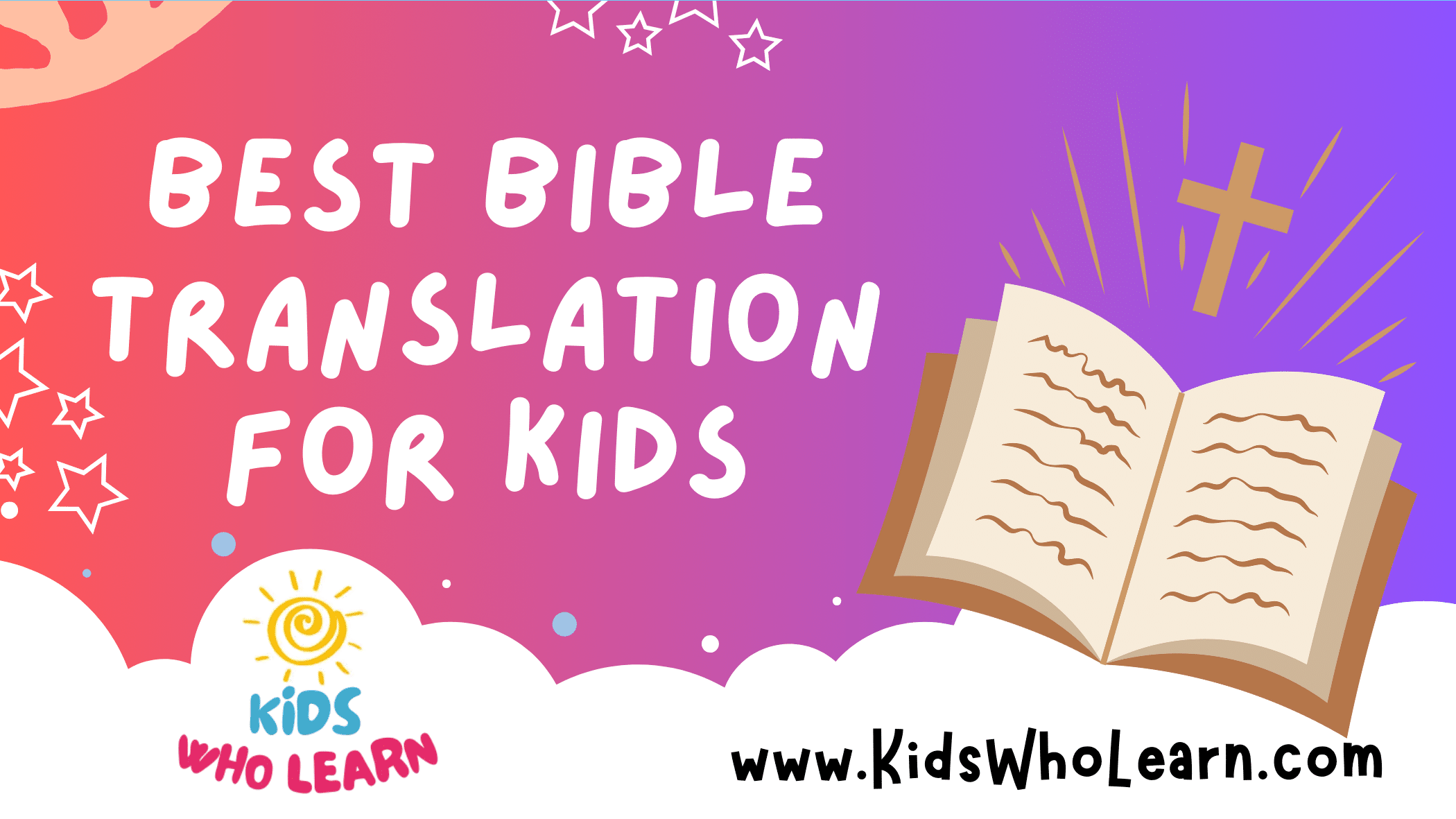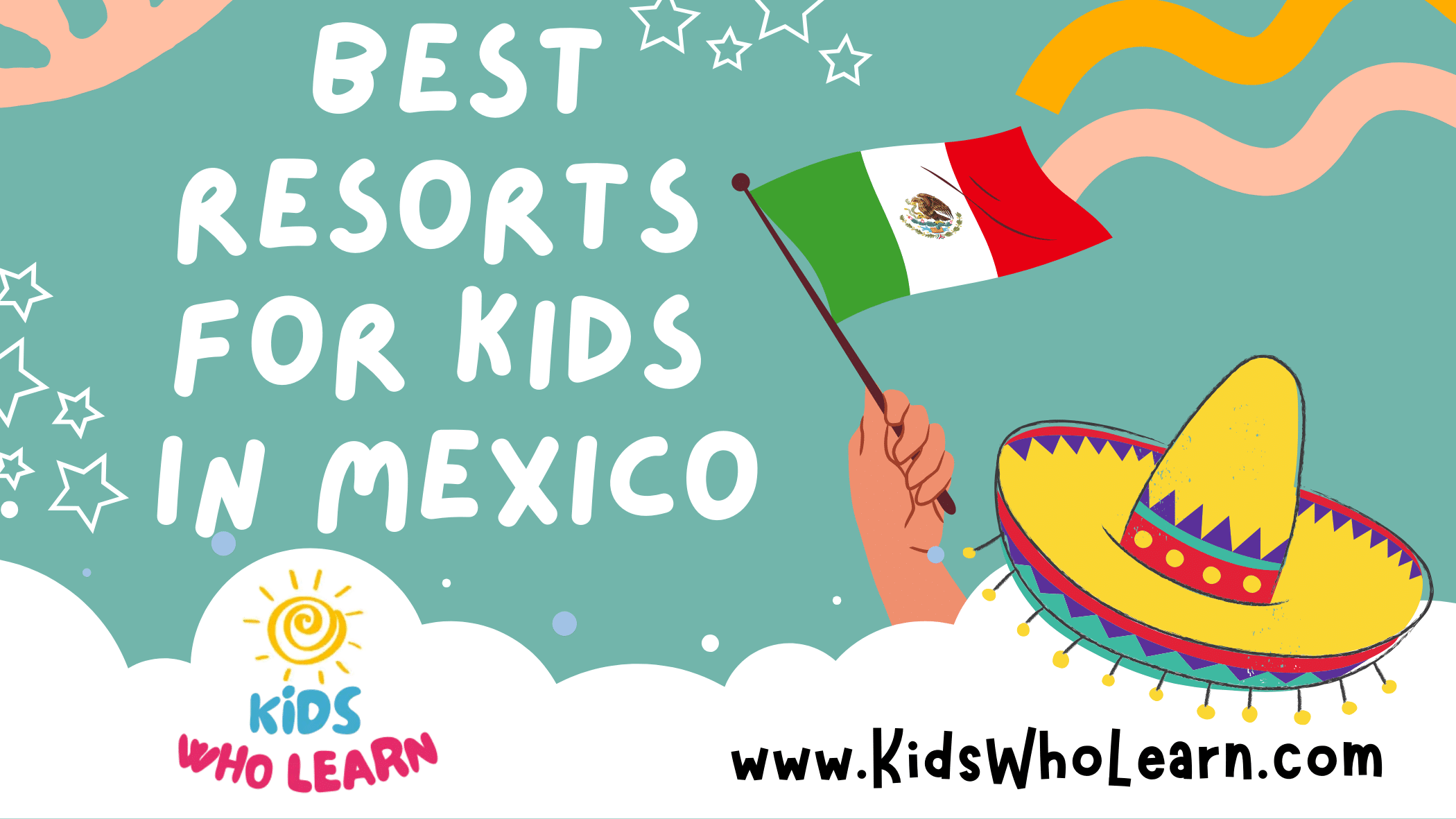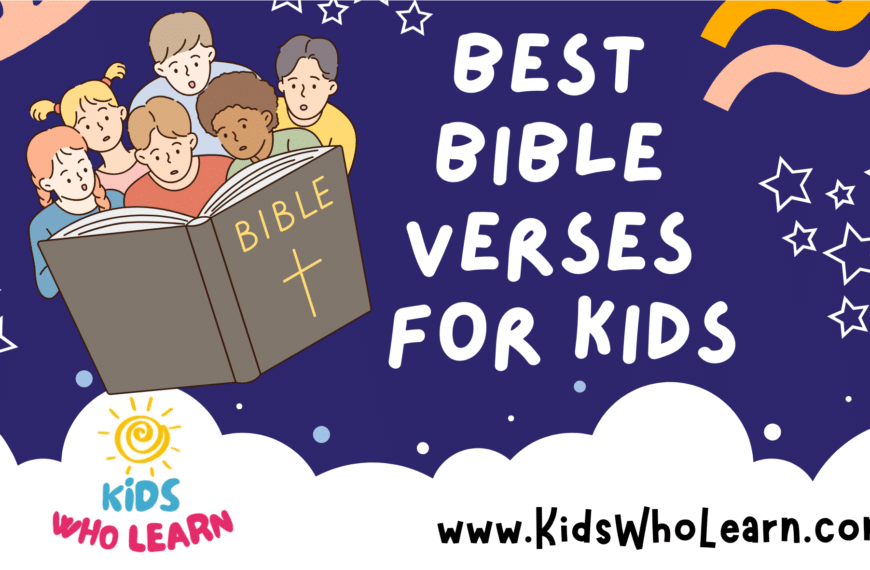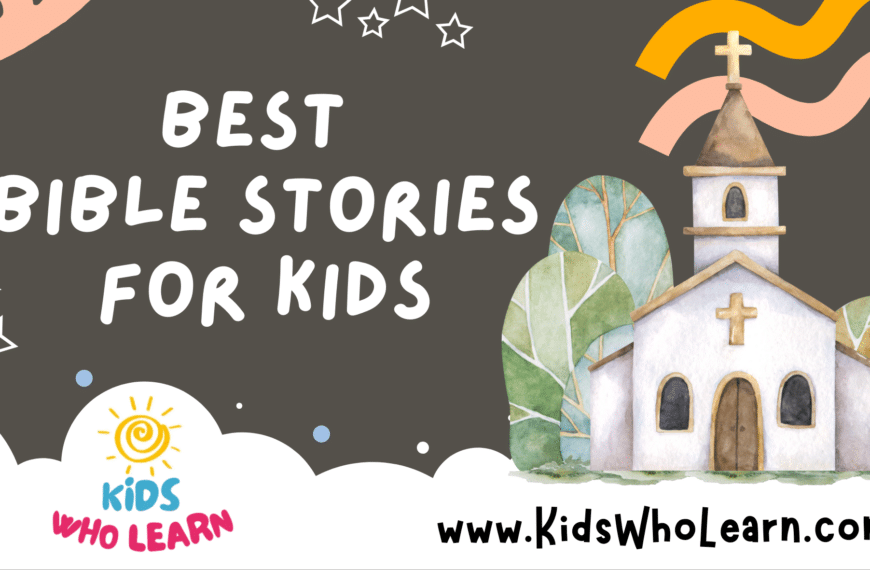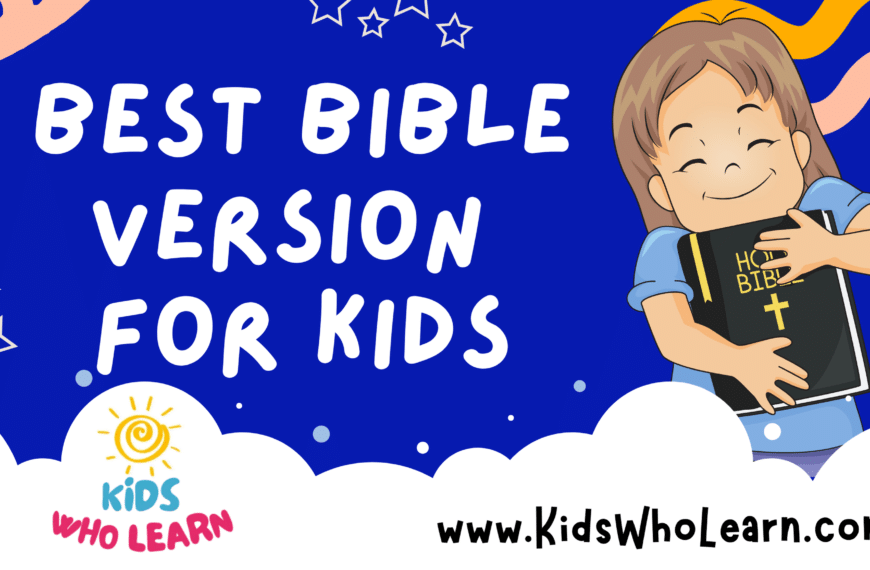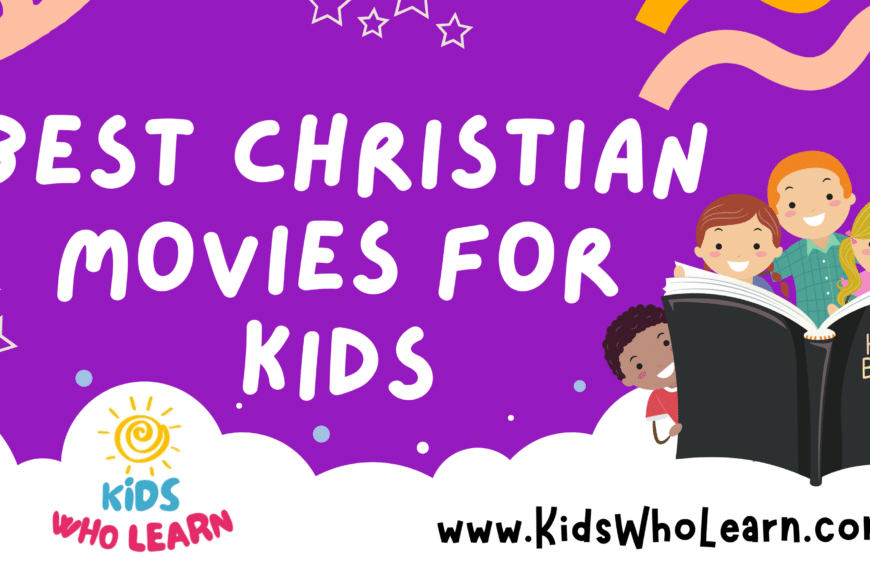Selecting the best Bible translation for children is a crucial task that shapes their first encounters with the scriptures. Different versions vary in vocabulary, complexity, and theological nuance, factors that can greatly affect a child’s understanding and enjoyment of the Bible. Therefore, choosing a translation that is both accessible and faithful to the original texts is imperative for young readers. With a myriad of options available, it’s important to consider age-appropriateness and the educational goals you have for the child in question.
Given the diversity of Bible translations aimed at younger audiences, it’s valuable to look at popular choices that cater specifically to this demographic. Translations often incorporate illustrations, simplified language, and additional notes to assist with comprehension. Furthermore, accompanying storybooks and curricula can complement these translations, providing context and engaging ways for children to learn biblical stories and principles. The role of parents and educators is crucial in guiding children through their biblical journey, supplying them with the right resources and guidance.
Key Takeaways
- Choosing the right Bible translation for kids involves assessing readability and faithfulness to original texts.
- Popular children’s Bibles often include special features like illustrations to aid understanding.
- Parents and educators play a key role in facilitating children’s engagement with the Bible.
Understanding Bible Translations
When selecting a Bible translation for children, it’s essential to understand how various translations handle the language and concepts of the original texts. Your choice should align with the cognitive and comprehension levels of young readers while faithfully conveying God’s word.
Basic Translation Differences
Dynamic Equivalence (Thought-for-Thought): Translations following this philosophy prioritize conveying the meaning of the original texts in a way that is easily understandable and relevant to contemporary readers. Examples include the New Living Translation (NLT) and the Contemporary English Version (CEV).
- Pros: Accessible language for children; easier to grasp Biblical concepts.
- Cons: Less literal to the original text; some nuances may be lost.
Formal Equivalence (Word-for-Word): These translations stick closely to the structure and words of the original languages. The English Standard Version (ESV) and the New American Standard Bible (NASB) are examples of this approach.
- Pros: High fidelity to original texts; greater detail and accuracy.
- Cons: Language may be complex for children; potentially harder to understand.
Optimal Equivalence: A balanced approach between dynamic and formal equivalence, aiming to represent the original text accurately while being understandable. The Christian Standard Bible (CSB) is an example of this translation type.
Translation Philosophy
Understanding translation philosophy is crucial for selecting an appropriate Bible version for kids. This revolves around how translators interpret and render God’s word, impacting readability and comprehension.
- Spectrum of Translation Philosophy:
- Word-for-Word: Emphasizes linguistic precision and often maintains the original order and words.
- Thought-for-Thought: Focuses on conveying the meaning and ideas in a way that is easily relatable.
- Paraphrase: Prioritizes a more free-flowing, interpretative approach with significant rewording for clarity and simplicity.
Your choice should be informed by the translation philosophy that best matches the children’s developmental level and the degree of accuracy that you desire in presenting the biblical texts.
Age-Appropriate Bible Versions
Selecting a Bible version that aligns with your child’s reading skills is crucial for their understanding and engagement. Here, you’ll find tailored options for preschoolers and school-age children to enhance their biblical learning experience.
Bibles for Preschoolers
For preschoolers, the emphasis should be on simple language and colorful illustrations to captivate their interest. Your child might enjoy:
- The Beginner’s Bible: With large print and bright pictures, it simplifies stories making them accessible to young children.
- The Jesus Storybook Bible: This version weaves the narratives into a framework understandable for preschool readers with its emphasis on storytelling.
Choose a children’s Bible that’s sturdy and interactive to withstand frequent use and encourage participation.
Bibles for School-Age Children
Once your child is in school, their reading level has likely advanced. They are ready for versions that offer a deeper understanding while still being relatable. Consider these options:
- The Adventure Bible: It includes activities and questions that are appropriate for kids who have basic reading skills.
- The International Children’s Bible: This version uses a third-grade reading level for clarification and easy comprehension.
For school-age children, look for editions that offer additional resources such as dictionaries and maps to help build their familiarity with biblical contexts.
Popular Bible Translations for Kids
When choosing a Bible translation for children, it’s essential to consider readability and age-appropriate language. The following translations have been crafted with these factors in mind to aid in their understanding and engagement.
New International Version (NIV)
The NIV is a balance between a word-for-word and thought-for-thought translation, making it accessible yet faithful to the original texts. Its contemporary language ensures that younger readers can easily grasp the messages.
English Standard Version (ESV)
The ESV is known for its literal approach to translation while maintaining clarity, which can be beneficial as your children’s reading skills develop. It is ideal for those who appreciate a closer adherence to the original language.
New Living Translation (NLT)
The NLT employs a thought-for-thought translation philosophy, offering a reading experience that is easy to understand. It is particularly suitable for children who are new to the Bible or who struggle with complex sentence structures.
International Children’s Bible (ICB)
Uniquely, the ICB is not just a simplified version of an adult translation but specifically written for children. Its simple language and shorter sentences make it especially digestible for young readers.
New American Standard Bible (NASB)
The NASB is considered one of the most literal translations available and is a good choice if you are looking to challenge your child with a more exact representation of the Biblical languages.
Christian Standard Bible (CSB)
The CSB is a relatively new translation that seeks to provide a balanced, readable text. It’s a suitable option for children ready to transition from a simplifed version like the NIRV to a more formal one.
Bearing in mind your children’s comprehension and interest levels will guide you to the Bible translation best suited for their spiritual growth and learning.
Special Features in Kids’ Bibles
Selecting a Bible translation for children often involves looking for editions with features that cater to young readers. These features can make the text more engaging and help children understand and connect with the stories and teachings.
Illustrated Bibles
Illustrated Bibles use full-color visuals and artwork to bring biblical stories to life. You’ll find that illustrations can vary from abstract interpretations to more literal depictions, designed to complement the text and aid in comprehension.
For example:
- The Jesus Storybook Bible: Features vibrant, whimsical illustrations that appeal to younger children.
- The Action Bible: Presents comic book-style artwork, attracting older kids with an engaging visual narrative.
Journaling and Study Bibles
Journaling and Study Bibles include wide margins for notes and study notes for deeper understanding. These features encourage kids to interact with Scripture by recording their thoughts and reflections.
Notable versions:
- NIV Kids’ Visual Study Bible: Offers study notes and engaging graphics alongside the text.
- Inspire Bible for Girls NLT: Provides journaling space and pre-written prayers tailored to young girls.
Audio and Digital Bibles
Audio and Digital Bibles provide an accessible way for kids to engage with the Bible through listening or interactive content. Audio Bibles are often narrated in lively, engaging voices that can make listening a joy for auditory learners.
Popular options:
- YouVersion Bible App for Kids: Interactive app with animated stories.
- Adventure Bible Storybook Deluxe Edition: Includes audio CDs with narration and songs.
Bible Storybooks and Curricula
When selecting Bible materials for children, it’s essential to find engaging storybooks that captivate their imagination and curricula that guide their understanding.
Storybook Bibles
The Jesus Storybook Bible
Every story in The Jesus Storybook Bible whispers the name of Jesus, introducing children to the larger narrative of Scripture. The focus on Christ ties the biblical stories together into one great story of redemption.
The Big Picture Story Bible
Designed for young children, The Big Picture Story Bible presents the grand narrative of the Bible in a way that is easy to understand. Illustrated throughout, this storybook emphasizes how individual stories collectively point to God’s master plan.
The Action Bible
For older children who crave action and vivid storytelling, The Action Bible illustrates biblical events in a comic book format. This storybook excites readers with dynamic visuals while staying true to the Scriptures.
Bible Curriculum for Study
Foundation Worldview Curriculum by Elizabeth Urbanowicz
The curriculum designed by Elizabeth Urbanowicz provides a comprehensive approach to Bible study for children. By equipping them with critical thinking skills and a biblical worldview, this curriculum helps kids discern truth and apply biblical lessons to their lives.
Structured Study Plans
When looking for a curriculum to help your child engage with the Bible, seek structured study plans with age-appropriate lessons. These plans should include activities, questions for review, and opportunities for application to ensure a thorough understanding of Bible stories and principles.
Finding the Right Bible Translation
Selecting the best Bible translation for your child involves matching the text to their reading level and engaging their interest. By doing so, you ensure that the Bible not only becomes an accessible book for them to read but also an enjoyable one they can explore with enthusiasm.
Assessing Reading and Comprehension Levels
Age and reading ability are prime factors in choosing a suitable Bible translation. For younger children, a translation such as the NIrV Adventure Bible is designed to be understood by those reading at a third-grade level. It simplifies the original text without oversimplifying biblical concepts.
- NIrV (New International Reader’s Version): Easy-to-read language, shorter sentences.
- NIV (New International Version) Adventure Bible: Slightly more advanced, for those with a higher reading level.
Understanding scripture is as crucial as reading it. Look for Bibles with book introductions and notes that explain the context and content in an age-appropriate manner.
Considering the Child’s Interest
To spark a child’s interest in the Bible, the content should be engaging. Adventure Bibles often contain illustrations and activities that make learning about the Bible fun. Also, paying attention to the child’s personal interests can guide you towards a translation that includes relevant themes or artwork.
- Bibles for Children: May include maps, timelines, and illustrations.
- Features to Look For:
- Illustrations: Captivate attention with relatable and colorful imagery.
- Activities: Crosswords, puzzles to make learning interactive.
- New Testament Focus: Some children might enjoy the stories of Jesus and his teachings first.
By carefully considering readability and entertainment, your child can have an enjoyable and educational experience with the most fitting Bible translation for their needs.
Practical Advice for Parents and Educators
When selecting a Bible translation for children, ensure the language is age-appropriate and easy for children to understand. Consider versions like the New International Reader’s Version (NIrV) or the International Children’s Bible (ICB), which are specifically translated for a younger audience.
Look for interactivity features within Bible versions. Some children’s Bibles include illustrations, maps, and activities to engage young readers more deeply with God’s Word.
| Feature | Recommended For | Notes |
|---|---|---|
| Pictures | Younger Children (ages 4-8) | Helps with visual learning and memory. |
| Simplified Text | Early Readers (ages 6-10) | Avoids complex vocabulary that can confuse children. |
| Study Helps | Older Children (ages 8-12) | Includes character profiles, glossaries, and questions to consider. |
Involve children in the selection process. Allow them to pick a Bible with a cover and illustrations that appeal to them, reinforcing the idea that the Bible is a treasure meant for them to enjoy and explore.
Supplement with resources. Use children’s devotionals, Bible storybooks, and audio Bibles to complement your child’s understanding and make the experience of exploring God’s Word more comprehensive.
Be consistent. Encourage regular reading, and make it a part of your family’s routine. Your ongoing involvement and encouragement are crucial for fostering a lasting appreciation for the Bible.
Remember, your aim is to make this a positive experience that helps build a solid foundation for faith. By choosing an appropriate Bible translation and providing support, you’re equipping children to discover and connect with God’s Word effectively.
Biblical Engagement for Children
When choosing a bible translation for your child, The Action Bible and the International Children’s Bible (ICB) standout due to their accessibility and engaging content aimed at young readers.
The Action Bible utilizes a graphic novel format to bring Bible stories to life. Illustrations capture the excitement and emotional journey of Biblical characters, encouraging visual learning and retention. As you explore this option, keep in mind:
- Visually Appealing: Comic-style artwork grabs attention.
- Narrative Approach: Stories are told in a chronological flow which is easy to follow.
For a more traditional Bible experience, the International Children’s Bible is designed with children in mind. Its features include:
- Simple Language: Utilizes a third-grade reading level for ease of understanding.
- Clear Understanding: The ICB translates idiomatic expressions to more contemporary language.
Here is a quick comparison:
| Bible Version | Reading Level | Format | Notable Feature |
|---|---|---|---|
| The Action Bible | Various | Graphic Novel | Dynamic Illustration |
| International Children’s Bible | Third Grade | Standard Text | Child-Friendly Translation |
When guiding your child through their spiritual journey, look for translations that:
- Illustrate stories to make them more engaging.
- Use clear, simple language that a child can understand.
- Encourage interaction and exploration of scripture.
Remember to consider your child’s age and reading skills when selecting the right bible version to promote a positive and enriching biblical engagement.
Frequently Asked Questions
Selecting the right Bible translation for children can be pivotal for their understanding and enjoyment. Here are some specific recommendations to guide you.
What Bible translations are recommended for early readers between ages 3-5?
For early readers, The Beginner’s Bible by Zondervan is an excellent choice. It uses simple language and bright illustrations which are fundamental for this age group to grasp biblical stories.
Which Bible versions are most suitable and engaging for babies and toddlers?
For babies and toddlers, the ‘Baby’s First Bible’ series is very suitable as it presents stories in a very simple and visually appealing manner that can capture a young child’s attention.
What are some of the best Bible storybooks for children that provide a clear and easy-to-understand experience?
“The Jesus Storybook Bible” is one of the best storybooks, offering clear language and captivating illustrations to ensure an easy-to-understand experience for children.
How do you choose an age-appropriate Bible for children around 8-10 years old?
Look for versions like the International Children’s Bible (ICB) that use a third-grade reading level for clear comprehension, and include engaging illustrations and explanations, tailored for this age’s cognitive development.
Is the New International Version (NIV) of the Bible a suitable choice for kids, and why?
The NIV is indeed suitable for kids, especially older children, because it offers a balance of readability and a translation that stays true to the original text. However, accompanying guidance may be beneficial for deeper understanding.
For a child aged 11-12, which Bible translation offers both readability and accuracy?
For children 11-12 years old, the New Living Translation (NLT) strikes a good balance between readability and maintaining the original message of the Bible, making it an appropriate choice for pre-teens.

